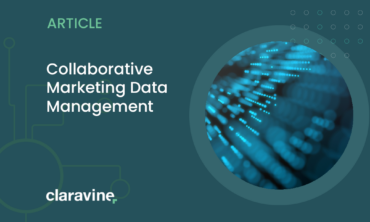Data Disorganization is a Big Problem
Last week, my colleague wrote about Building an Accurate View of Marketing Performance, with the recommendation that organizations should put the goal of data integration, or getting to a single source of data truth, as a primary goal. That’s because the alternative to data integration is data disorganization — an all-too-common state at many companies. Data disorganization is a seemingly insurmountable problem, but I have some thoughts.
I come at the data challenge from a Marketing Analyst background, and I freely admit my bias: I often think of analytics as the central piece. However, I recently had an eye-opening conversation at the MADS Conference in San Francisco. I was chatting with one of our clients, the head of data at a large financial services firm. He was talking about his colleague and mentioned in an offhand way that “she thinks the whole world is about Google Analytics.” Given my background (and my own tendency to see the world this way), I asked him to explain.
“Analytics is important,” he said. “But it’s just a tiny piece of the data pie. Fixing that one sliver is a good thing, but it’s not the main thing.” The main thing, he went on to clarify, is data governance more broadly.
When you step back and look at the larger data governance picture that complex organizations face, it’s daunting. The enormous integration challenge includes, among other things:
- Marketing data
- CRM (Customer Relationship Management)
- Content creation (marketing, but also other content asset management)
- Inventory management
- Business Intelligence platforms
- Audience management/experience personalization
- General data decentralization
Imagine a world where all of these data flows could talk to and correct each other! As it stands for most businesses, these are siloed data channels that require manual integration if they are ever integrated at all. Facing pressures in terms of both time and revenue, companies are forced to rank-order their data priorities and go with the best data available to them. One of the reasons I’ve focused my career on helping organizations improve their marketing data is because it’s been such an intractable problem — the messiest data, traditionally, and the least useful for guiding the business.
However effective we’ve been addressing one symptom, the patient is still sick. How well will these tools address other symptoms? I’m interested in addressing the whole system.
I was encouraged in this ambition during a recent Claravine prospect call. We were talking with a large tech vendor, who wasn’t sure about using us to improve their marketing data, but came back for a second pass to discuss another thorny data challenge.
Specifically, they wanted to talk Content Creation. This company employs hundreds of contractors to produce user content for their products (user manuals, product specs, how-to’s, FAQ’s). Writers are paid based on how quickly they produce new content for PDFs, and the performance of each asset gets its own tracking with unique SEO fields and audience identifiers. On top of that, this content comes in dozens of languages, across geographies, geared toward users with widely varying tech expertise.
They wondered, could we help them with this? And we can! It was kind of fun to conduct a whole spec call where the words marketing and analytics were never mentioned. With any data challenge, the secret elixir is to connect the humans who are the data creators to the humans who are data consumers. Data creators — in this case contract writers — should be able to focus on the job of writing, and shouldn’t have to know every technical aspect of a system’s back end to create useful, measurable results.
When you begin to think of data challenges in this way, one of the questions that arises quickly is, who owns this problem? At this particular tech company, we were working with a director of marketing capabilities. But we’ve also worked with chief data officers, and those in charge of user experience. This idea of starting every project with clean data as the primary end goal is still a new notion for many companies. Things will rapidly change for the better as it becomes a mindset.
Lining up your data at the beginning of a process is the major theme of Thomas C. Redman’s excellent book, “Getting in Front of Data.” In it, Dr. Redman thoroughly debunks the idea that scheduling data clean-up sessions is a best practice for any business. He’s not arguing you should use bad data…doing so would be irresponsible. “At the same time, “ he reasons, “it’s equally irresponsible to continue such [data clean-up] corrections, day in and day out, without attempting to get in front of the problem.” Controls need to be put in place, ideally, “as close to the moment of data creation as possible.”
Building alignment at the point of data creation is a challenge for large organizations. Their data creators may be spread out across broad regions, speak different languages, and work in a variety of roles. At Claravine we see value in targeting this nexus, the point where the needs of data creators and data consumers meet. We’re excited to see where the clean data revolution takes us next!



